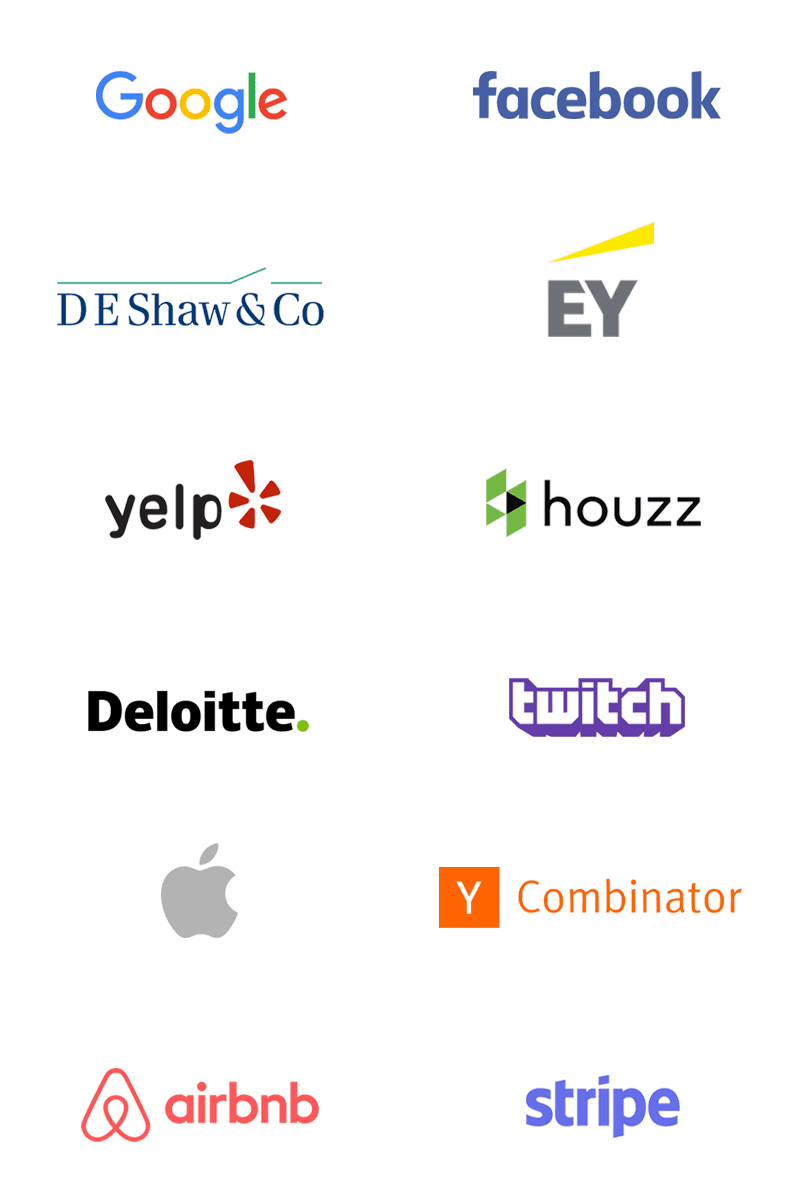Our mentors help you get more interviews and ace them for top companies like Google, Amazon, McKinsey and more.

Your mentor already works for a top tech company. They'll guide you through the entire process of landing your dream job.
We've helped all types of professionals advance in their careers


I wanted a support system and Pathrise was everything I could have asked for. My mentors helped me accomplish what would have taken me 3 years alone in less than 3 months.


Before Pathrise, I had applied to hundreds of companies online and almost never heard back. I joined Pathrise and landed two amazing offers I wouldn't have dreamed of on my own.


If it wasn't for my amazing mentors, I would have never been able to get the salary I am at now in consulting.
average junior base salary
average mid-level base salary
average senior base salary
Your program and strategy is specialized to what you're interested in

Navigate the hiring process for different technology stacks, while learning how to approach technical interviews with data structures & algorithms.
View TrackAccelerate your Cybersecurity and IT job search by preparing for interviews and tackling challenges. Refine your resume to secure a position in this dynamic field.
View Track
Map out a path to a top role by learning about product discovery, metrics, and more. Then learn how to communicate and think through case interviews.
View Track
Receive advice from expert data scientists on how to tackle machine learning and statistics interviews. Leverage what you learn when you start your new career.
View Track
Optimize your job search to land a growth marketing role at a top tech company. Master key topics such as marketing analytics, paid media, SEO and more.
View TrackLevel-up your sales career or learn how to translate your experience to the tech industry by working with Director and VP-level sales leaders from top tech companies.
Our mentors come from industry leading companies


You probably have some questions — we have answers
Pathrise is a career accelerator that works on your behalf to help you land your next job! We use proprietary tech, data-driven strategies, and one-on-one expert mentorship to provide you with resume, interview, networking, and negotiation support. Our fellows typically experience an increase in interview scores, more job offers, and even increased salaries.
At this time, Pathrise only works with job seekers who are 18 or older and eligible to work in the United States. Beyond that, we look for a commitment to improvement and a baseline level of knowledge or skills to be competitive in your field. While there is no secret formula, we are committed to working with those we feel we can help and at the end of the day, if we’re not sure we can provide you with the value you need and deserve, we may not approve your application.
At the end of your Free Trial, your Admissions Manager will walk you through a loan application process with one of the financing providers we work with. Pathrise is based on aligned incentives, where we only get paid if you get placed first. Unlike traditional loans, Income Based Repayment loans have capped interest and built-in protection in case you lose your job or your income decreases. Once you’re placed in your new role, your payments begin one month after your start date and the financing provider as well as our team is always standing by if you’re dealing with extenuating circumstances or need some extra flexibility. If you’re a prospective fellow and have additional questions about the Income Based Repayment model, please reach out to info@pathrise.com. If you’re a current Trial fellow, in the full program, or recently placed, reach out to support@pathrise.com.